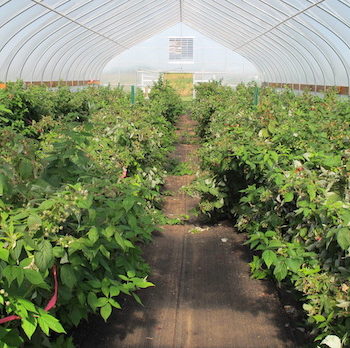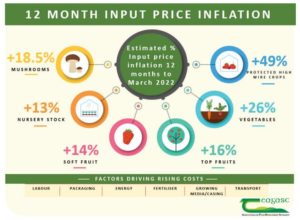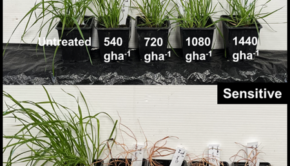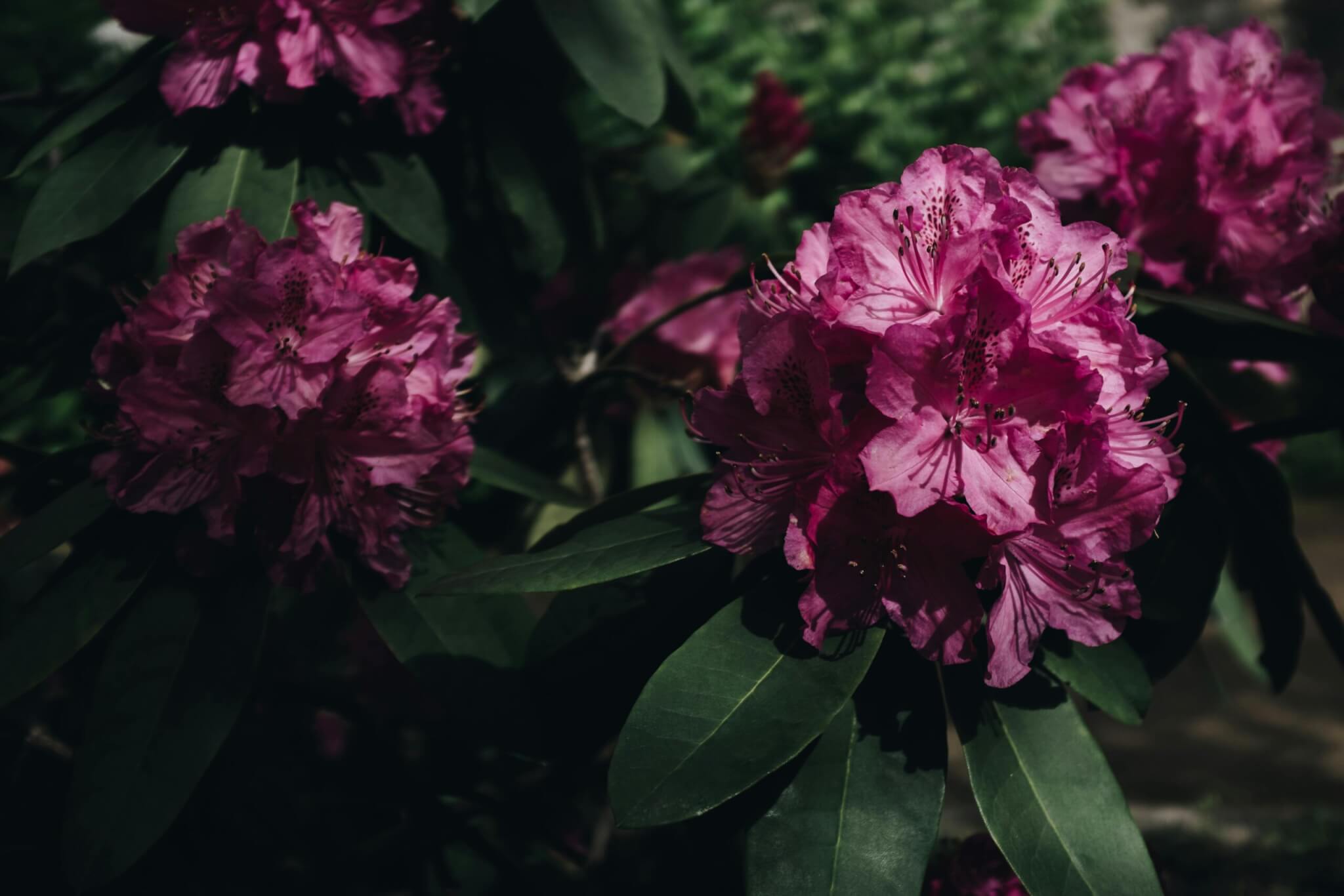Horticultural input price inflation continues to squeeze growers’ margins

Teagasc estimates that total input costs have increased between 13% and 49% in just 12 months
5 May 2022
Horticultural input-price inflation has pushed total input costs up by between 13% and 49% within one year, a new report by the Teagasc Horticulture Development Department has revealed.
Horticulture crop input prices have risen significantly in the past twelve months since March 2021, initially due to external macroeconomic factors, but more recently due to the invasion of Ukraine.

Image via Teagasc
As such, growers have seen unparalleled increases in the costs of key inputs to the horticulture sector in Ireland including energy, fertiliser, packaging, and labour. Teagasc has revised the figures on input price inflation first reported in November 2021, to reflect the full extent of inflation in the 12 months to 31 March.
Mushrooms
In the 12 months to March 2022, mushroom producers witnessed an 18.5% increase costs of production. The mushroom sector is labour intensive. Labour currently accounts for 42% of total cost of production on mushroom farms and has increased by 8.5% in the reference period. Mushroom compost, meanwhile, represents 37% of total input costs and increased by 8.24% in the reference period. At 6.8%, packaging is not one of its greatest input costs, but it has increased sharply (48%) over the past 12 months, and further increases are expected in 2022.
Soft fruit
For soft fruit producers, the cost of production increased 14% in the last 12 months. Labour accounts for at least 40% (or 45% on some farms) of the total production cost on each farm. Competition in sourcing workers is on the rise, and has led to higher wage price inflation, estimated at around 9% in this sector for the reference period. Heating, fuel, and electricity costs also contributed to the increase.
High wire crops
The cost of production shot up to 49% for hire wire crops, such as glasshouse tomato, cucumber and pepper production that depends on gas specifically. This sector has significant exposure to the increase in gas price. While the sharp increase in gas price occurred mid-year 2021, and again in February-March 2022, increases of around 270% in unit gas price have been recorded in the twelve months up to March 2022. Teagasc said if the current price remains for the full 2022 season, it will represent a fourfold increase of this input cost.
Nursery stock & ornamental sector
Due to its high dependence on controlled release fertiliser (CRF), which has seen its price treble, as well as labour shortages and energy price increases, this sector has witnessed a 13% cost of production increase. Meanwhile, plastic supply issues have created challenges for growers who are being asked to place orders one year in advance, while also facing substantial price increases.
Vegetables
The impact on overall costs of production for field vegetables are very significant, where margins are already extremely tight. Vegetable producers faced a 26% increase, due to significant continuing inflation in input prices, in particular fertiliser, fuel, packaging, and machinery coupled with the shortage in labour. These challenges have led to growers halting production of certain lines or leaving the sector altogether. Teagasc estimated that outdoor field vegetables will be down on 2021 area to the tune of 10 -12% with some crop commodities back by as much as 15-20%.
Retail price increases
While primary producers for the most part have received some retail price increases in the last twelve months, the report said recent rapid pace of inflation means that achieving a margin over costs for many horticultural enterprises in 2022 is becoming more challenging. A market response will be required to ensure the viability of an industry that puts local, fresh, top-quality produce, on the supermarket shelf.
“Growers have seen unparalleled increases in key input prices, particularly those inputs linked to energy,” said Dermot Callaghan, head of Teagasc Horticulture Development Department. “Over the winter, producers have been negotiating with their customers for price increases based on the first wave of inflation reported in the fourth quarter of 2021. As these were concluding, a second significant wave of input price inflation, linked to energy inflation and the Ukrainian invasion, started to manifest itself. Without a timely market response, margins will in some cases be completely eroded by this latest wave of input price inflation.”
The complete report is available to read at: teagasc.ie/horticulture-crop-input-price-inflation-2022.php



 Print
Print









Fans 0
Followers